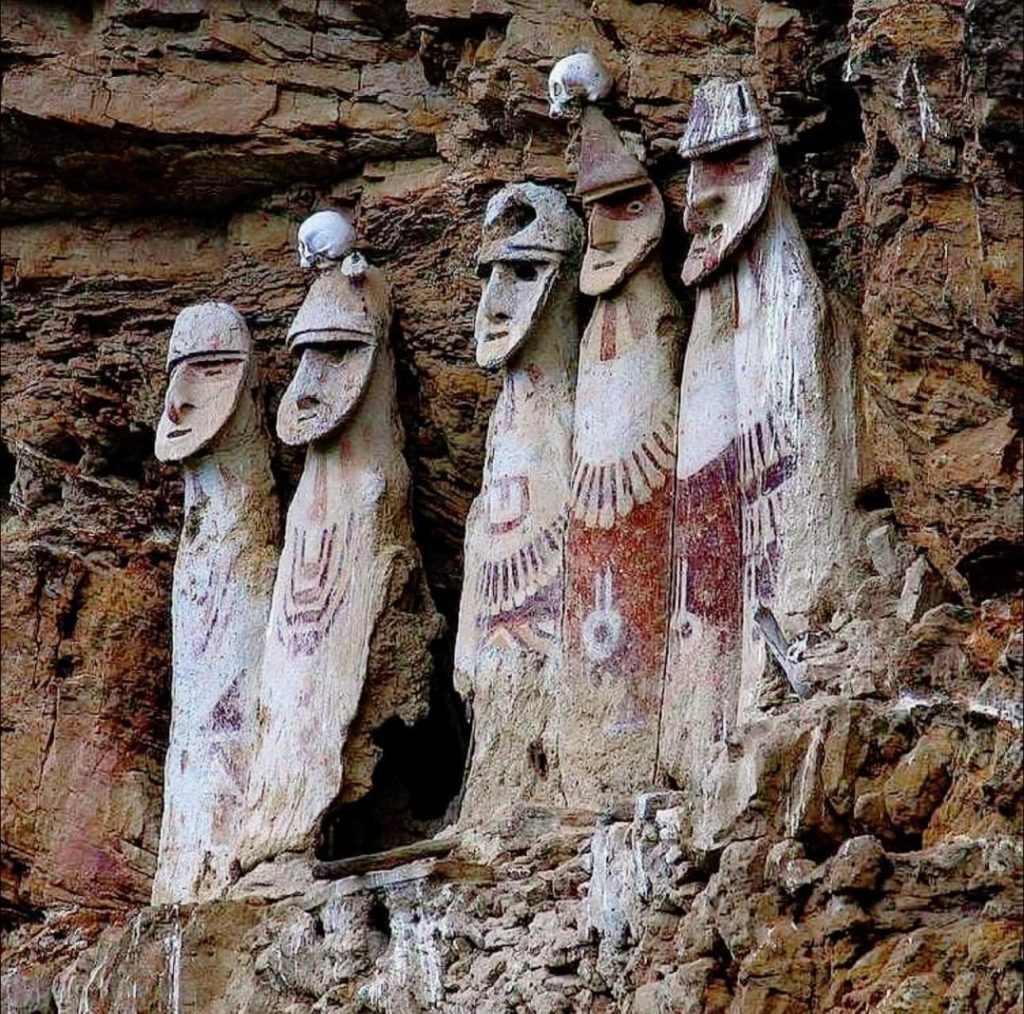Shrouded in the misty highlands of northern Peru lies the lingering legacy of an ancient civilization that once held dominion over the clouds—the Chachapoya, or the Cloud Warriors. Flourishing long before the Inca Empire, the Chachapoya built a powerful society that thrived among the cliffs and dense cloud forests of the Andes. Yet despite their significant achievements, their sudden disappearance left behind more questions than answers, drawing modern archaeologists, historians, and curious minds into a centuries-old enigma. Their stories, relics, and architectural wonders continue to offer tantalizing glimpses into a culture that time nearly forgot.

One of the most breathtaking testaments to Chachapoya brilliance is the fortress of Kuelap, perched more than 10,000 feet above sea level on a ridge overlooking the Utcubamba Valley. Often referred to as the “Machu Picchu of the North,” Kuelap features an imposing defensive wall that towers nearly 60 feet high and encloses more than 400 round stone structures believed to have served as dwellings. The architecture of Kuelap, while markedly different from the geometric precision of Inca stonework, demonstrates extraordinary sophistication. Its placement at such an extreme altitude and the scale of construction suggest a society with not only advanced engineering knowledge but also the organizational capacity to mobilize labor in an incredibly challenging environment. These elements underscore the Chachapoya’s mastery over their rugged terrain and challenge long-standing assumptions about the limitations of pre-Columbian civilizations.
Even more intriguing are the discoveries found near the Lagoon of the Condors, a remote and hard-to-reach area nestled within the cloud forest. In 1997, archaeologists unearthed more than 200 mummies carefully preserved in cliffside tombs. These remains, many found seated in anthropomorphic sarcophagi, were remarkably intact, preserved naturally by the cold and humidity of the highland environment. The mummies provide rare insight into Chachapoya burial customs and spiritual beliefs. From the arrangement of the bodies to the goods buried with them, it’s evident that the Chachapoya held a deep reverence for the afterlife. These funerary practices also suggest a complex social hierarchy, as certain individuals were clearly honored more elaborately than others.
The mysteries surrounding the Chachapoya’s origin continue to stir scholarly debate. German professor Dr. Hans Giffhorn has presented a controversial theory suggesting that the Chachapoya may have been influenced by, or even descended from, Old World civilizations. After 16 years of intensive research, Giffhorn identified parallels between Chachapoya customs and those of ancient Galician, Celtiberian, and Balearic cultures. He points to similarities in burial styles, textile patterns, and even defensive architecture. Although mainstream archaeology largely supports the theory of isolated development in the Americas, Giffhorn’s work raises the possibility of transoceanic contact long before Columbus—a hypothesis that challenges traditional narratives about the Americas’ pre-Columbian history.
Adding to this unconventional line of inquiry is independent researcher Brien Foerster, who has studied ancient skeletal remains from the Paracas Culture of Peru, located south of the Chachapoya region. Through mitochondrial DNA analysis, Foerster claims to have found evidence of haplogroups typically associated with Eurasian populations. His research suggests the presence of people with non-native genetic markers in ancient South America, a finding that, if validated, would further complicate our understanding of ancient migrations and genetic exchanges. Although his conclusions remain highly disputed within academic circles due to limited peer-reviewed evidence, the questions he raises continue to provoke discussion and further investigation.
Equally puzzling are the mysteries surrounding Father Carlos Crespi Coci’s collection of artifacts. A Salesian priest stationed in Cuenca, Ecuador, Father Crespi reportedly received thousands of strange items from local indigenous people. The artifacts, now locked away in a bank vault, are said to feature inscriptions and iconography that resemble those of ancient Mesopotamian or Sumerian cultures. Some researchers speculate that these objects may provide physical evidence of contact between South American and Old World civilizations, though the authenticity of the collection and the exact origin of the items remain highly contested.
Another source of intrigue is the genetic analysis of the Chachapoya mummies. Dr. Sonia Guillén, a respected Peruvian anthropologist, has worked extensively on preserving and studying these remains. However, her public statements regarding genetic testing have at times been inconsistent. While she once indicated promising results from early tests, no conclusive studies have been published, and some researchers have voiced concerns about transparency. The lack of clear data has only deepened the mystery and fueled speculation that the Chachapoya may have possessed unique genetic traits or ancestry that diverged from surrounding Andean populations.
Despite decades of research, the Chachapoya civilization continues to defy simple explanations. Their abrupt disappearance from the historical record—whether due to conquest by the Inca, disease, or internal collapse—remains unclear. What we do know is that their influence can still be felt in the architectural ruins they left behind, the burial sites that line cliff walls, and the cultural traces found in local indigenous communities. Their legacy challenges the prevailing view that the Andes were dominated solely by the Inca before European contact.
Today, modern technology and collaborative archaeological efforts are helping us uncover more about these elusive people. From drone mapping of highland sites to advanced genetic testing of mummies, each new discovery adds a piece to the puzzle. But even with these tools, the Chachapoya remain one of the most enigmatic and captivating civilizations in the Americas.
In the grand story of human history, the Cloud Warriors stand as a vivid reminder that much remains to be learned. Their architectural feats, mysterious rituals, and unresolved origins urge us to rethink what we believe about ancient societies in the New World. As we continue to peer into the foggy past of northern Peru, the Chachapoya’s legacy persists—not just in stone and bone, but in the questions that drive us to explore further.





